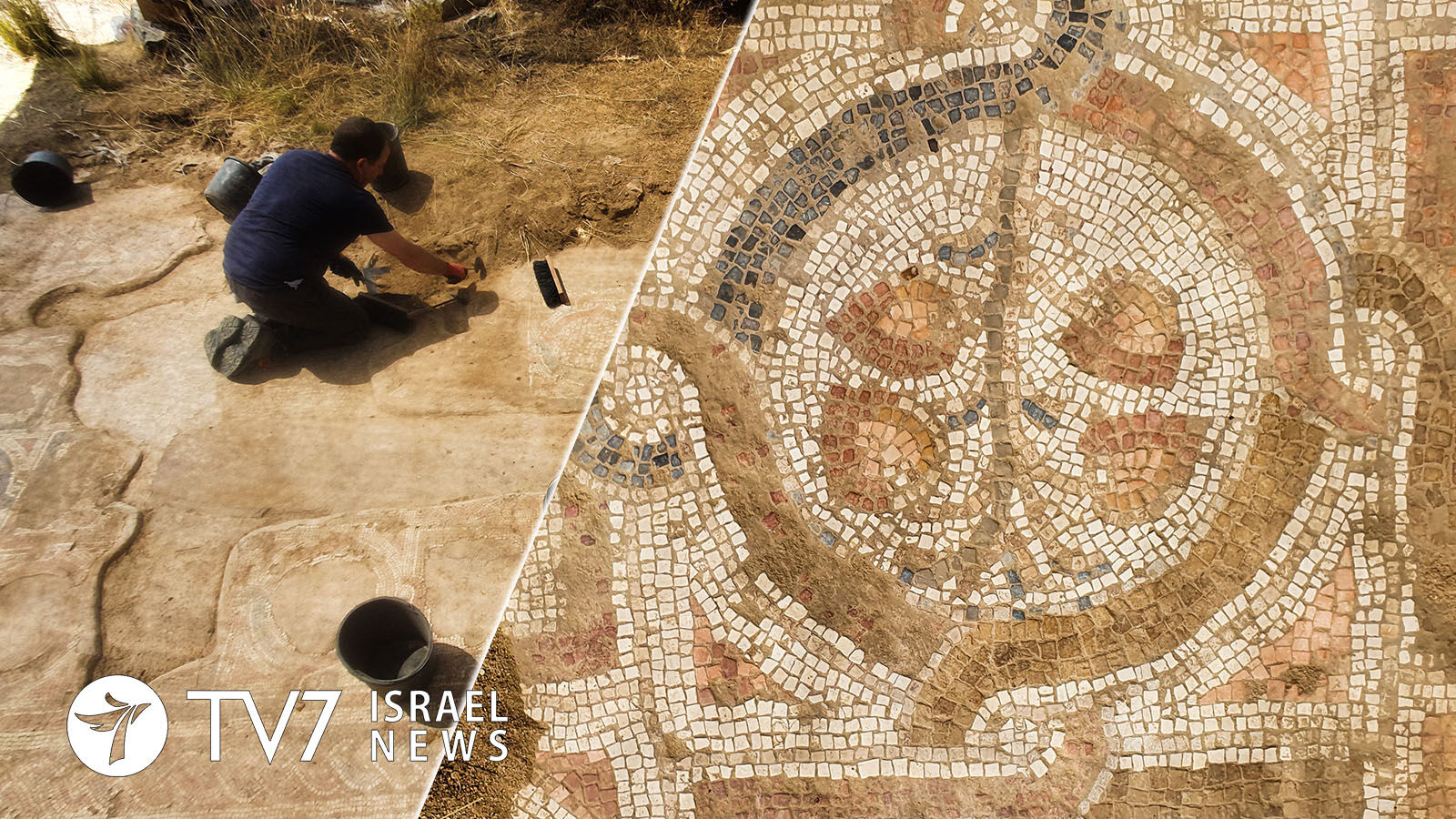The convent may have commemorated the burial place of the biblical Hannah, wife of Elkanah. The long-barren matriarch ultimately gave birth to the Prophet Samuel, whom she vowed to dedicate to the service of God, said Israel Antiquities Authority (IAA) archaeologist Dr. Eitan Klein.
By Erin Viner
“As often in the ancient world, the convent was erected here, commemorating an ancient tradition – possibly of the burial place of Hannah,” said Excavation Director Issy Kornfeld on behalf of the IAA.
The ancient complex subsists of two buildings located in a military zone at Horbat Hani, in the low foothills east of the central Israeli city of Shoham. One of the structures was a church paved with a colorful mosaic depicting faunal and vegetal scenes, an entrance hall, the nuns’ dormitories, hermit cells, a tower with rooms, a crypt and an underground burial complex. The other building included a kitchen, refectory dining hall and an inn for pilgrims, according to an IAA statement.
Several female skeletons, possibly of women who sought to be buried in proximity to the sanctified figure of Hannah, were found during the first discovery of the site.
The Byzantine nunnery was first excavated two decades ago by the IAA but later re-buried as a protection measure. It was then recently re-discovered by dozens of IDF soldiers after being accidently damaged during a training drill. It has now been restored under the guidance of the IAA Community Educational Center in an initiative entitled, “The Nature Defense Forces Project: Officers Take Responsibility for the Environment.”
Project Director Guy Saly said the excavation “is an example of officers taking responsibility for the environment and carrying out meaningful activity, exposing and conserving the ancient site—archaeologists together with officers and soldiers who are the citizens of tomorrow—thus enabling us to experience and connect with our country’s heritage. The soldiers and the offices enjoyed the hands-on archaeological work, and we hope that the joint activities protecting the archaeological sites will continue in the future.”
The joint IAA/IDF initiative “creates an opportunity for every soldier and army officer,” commented IAA Director Eli Eskosido, adding that, “The adoption of archaeological sites in army bases and military zones, and the creation of archaeological exhibitions in army bases, further consolidate the strong connection between the defense of the State of Israel, and the protection of the ancient sites and our cultural inheritance.”
The church mosaic will remain partially visible to the public, and it can be seen with advance permission from the IDF Central Command at telephone number: 02-530-5042.
